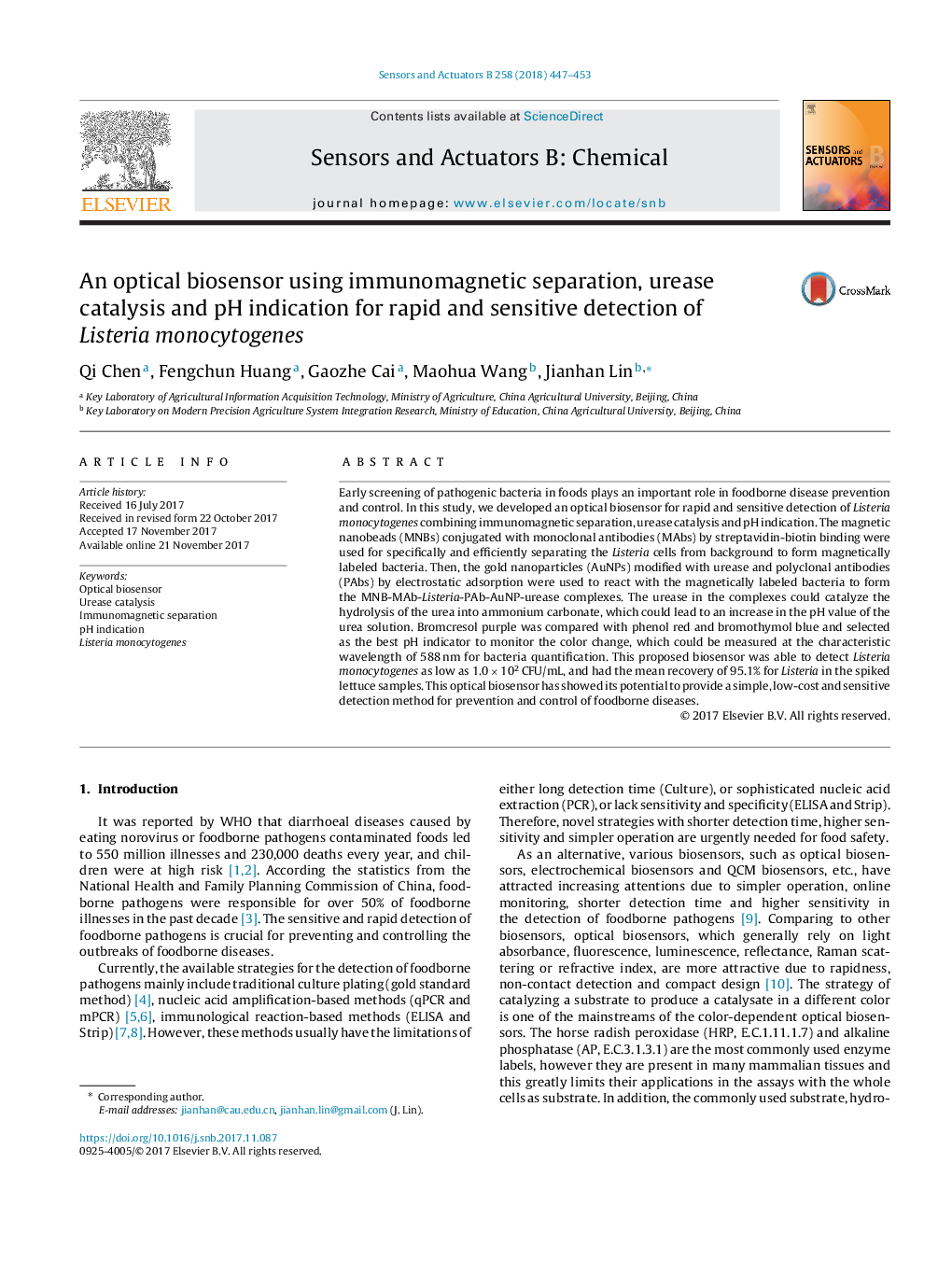| Article ID | Journal | Published Year | Pages | File Type |
|---|---|---|---|---|
| 7141214 | Sensors and Actuators B: Chemical | 2018 | 7 Pages |
Abstract
Early screening of pathogenic bacteria in foods plays an important role in foodborne disease prevention and control. In this study, we developed an optical biosensor for rapid and sensitive detection of Listeria monocytogenes combining immunomagnetic separation, urease catalysis and pH indication. The magnetic nanobeads (MNBs) conjugated with monoclonal antibodies (MAbs) by streptavidin-biotin binding were used for specifically and efficiently separating the Listeria cells from background to form magnetically labeled bacteria. Then, the gold nanoparticles (AuNPs) modified with urease and polyclonal antibodies (PAbs) by electrostatic adsorption were used to react with the magnetically labeled bacteria to form the MNB-MAb-Listeria-PAb-AuNP-urease complexes. The urease in the complexes could catalyze the hydrolysis of the urea into ammonium carbonate, which could lead to an increase in the pH value of the urea solution. Bromcresol purple was compared with phenol red and bromothymol blue and selected as the best pH indicator to monitor the color change, which could be measured at the characteristic wavelength of 588Â nm for bacteria quantification. This proposed biosensor was able to detect Listeria monocytogenes as low as 1.0Â ÃÂ 102Â CFU/mL, and had the mean recovery of 95.1% for Listeria in the spiked lettuce samples. This optical biosensor has showed its potential to provide a simple, low-cost and sensitive detection method for prevention and control of foodborne diseases.
Related Topics
Physical Sciences and Engineering
Chemistry
Analytical Chemistry
Authors
Qi Chen, Fengchun Huang, Gaozhe Cai, Maohua Wang, Jianhan Lin,
